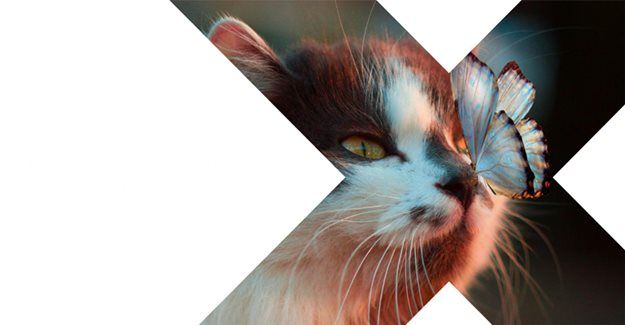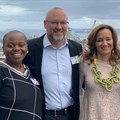#FairnessFirst: Transforming your business to win in the age of experience

Vilakazi joined the Kantar business about a year ago, with a specific focus on CX and business transformation. She’s a research psychologist with a PhD in organisational development and diversity management, with experience across political, social and commercial areas.
Her passion in the CX space is on the people side of things, understanding how businesses can inspire people internally to deliver what’s been promised to customers externally.
But to get this right, we need to understand the CX barriers in place, because even with the best intentions, we often find ourselves struggling with things that shouldn’t be a focus. Vilakazi’s theory is that those barriers are often emotional.
There’s also the fact that legacy businesses were purely designed to sell products and services, yet now need to flip the script and focus on experience, which has actually been there all along, and ties in with the overall transaction.
The push to become people-centric
Yet for businesses to start selling experiences, we can’t continue with business as usual. The whole business needs to transform in order to be more geared towards delivering experiences while still selling that product or service.
It’s about making a deliberate strategic decision to drive an inclusive culture, where people are at the centre of the business strategy.Vilakazi shared that what comes through consistently across various definitions of ‘business transformation’ is that it’s not about rapid change but constant, incremental changes.
When you see a butterfly, the ultimate example of transformation, you often can’t even imagine that it started life as a caterpillar, as it’s in such a completely different form.

Business transformation follows the same principle, but for South Africans, the moment we hear the word ‘transformation’ we think of BB-BEE, of diversity and inclusion, as we’ve been primed that way.
However, we’ve been on this road for the past 25 years and we’re still having the same conversations about diversity and inclusion in the workplace.
Despite the obvious business sense it makes, if you walk into any company right now and look at its structures, you’d be hard-pressed to find many that are a true reflection of South Africa.
In fact, the results of the 2018 Thomson and Reuters Diversity and Inclusion Index, a global study on the top 100 most diverse and inclusive companies from a gender perspective, list just 4 SA brands.

Vilakazi says we could and should do better, especially as a country with clear transformation frameworks and policies in place.
The reason? To get a company to be truly diverse and inclusive, it has to be the result of a deliberate attempt that involves the company culture and putting people at the centre of the business strategy. The road towards better CX is similarly bumpy.
The head, heart and hands approach to getting a clear CX focus
Sharing what we learn from experts in the area like South African and international thought-leader in diversity and inclusion Nene Molefi, Vilakazi says that in the companies that get this right, it’s crucial to get senior executive buy-in – it has come from the top.
If the push comes from other angles, it usually doesn’t work. In addition, Molefi says it’s about working with the mind, then the heart and then the hands...
For the head or mind to get involved, it’s easy, as it makes clear business sense to focus on delivering experiences when selling products and services. So we often rush to get started with our hands and run around doing initiatives, but when the heart is not there, we find ourselves constantly going back to where we started, without making a true impact.With our heads, we need to understand the importance of CX, and that this is more than customer satisfaction – it’s a strategic tool of business transformation.
To get this right, we need to understand what that customer experience currently looks like and what we ultimately want it to look like.
Involving the heart is usually the critical missing step, but we need to engage the hearts of the people in our business so that they share the vision with the same passion to do things better, in order to offer the best possible experience and note the emotive moments our customers share with us.
Lastly, with our hands, we have to do something about it as good customer experience doesn’t just happen, we have to drive it.
Even more so when this involves real change, as existing business siloes need to be broken down and the departments need to work together to address customer needs.
Unfortunately, Vilakazi says there’s definitely a gap between how companies see themselves in being customer-centric, delivering great customer experiences and feedback on the consumers’ reality of that.
But why does this gap exist, especially if focusing on customer experience is the right thing to do?
Mind the gap: Customer expectations and customer experience
Vilakazi says, “Which CEO would tell you they are failing dismally on delivering CX?”
Intellectually, it’s something we all know we should be doing, so we get involved in a few activities and then assume we are on the right path and doing the right thing, only for customers to turn around and share a different reality.
This results in frustration from the customers, but Vilakazi calls it’s a good frustration, as 8 out of 10 customers are willing to pay more for a better experience. This adds to the business case for offering the best possible customer experience.
There’s a further hurdle to consider, as Vilakazi says as many as 89% of CX professionals state that CX ROI is not well established in their organisations because of the mismatch between what CX needs to do and what CX is permitted to do.
When you initially get your job description you think, ‘Wow, I’m going to do amazing things with this company,’ only to end up spending most of your time fighting rules you shouldn’t be fighting.Because of this mismatch, it’s hard to prove the ROI of hiring the customer experience professional in the first place, as you end up chasing endless initiatives and not making a real impact.
In some companies, the CX conversation is in the background, but in practice, they fall back to what they’ve always known: “We need to push sales and offer discounts so that we close off the year well,” rather than making an effort on improving the overall experience.
Forrester’s “Predictions 2019: Transformation goes pragmatic” study found that 20% of brands do just this, giving up on strategic CX initiatives and resorting to price reduction for short-term gains.
This only pushes your organisation further away from becoming customer-centric, and Vilakazi says it’s the same with diversity and inclusion.
Top CX barriers to overcome
Convesocial and Corinium’s ‘Customer Experience Trends’ for 2019 study, on ‘building the organisation of the future’ asked CX professionals what it takes to get customer-centricity right in the organisation. Respondents listed the following as the top 4 CX barriers to overcome:
1. Achieving a single view of the customer (41%);
2. Achieving consistent customer experience across all channels (35%);
3. The lack of C-suite buy-in (21%); and
4. Employee engagement (20%).
There’s also the fact that CX professionals are themselves not looking at the problem correctly and exhausting themselves trying to get buy-in from various parts of the team.
But the same study found that the influence of CX across other departments isn’t well-documented. Instead, it’s informal and largely depends on having good relationships with other teams in the organisation, particularly product development, marketing, business development, sales and technical support.
These departments tend to invite the CX professional when they have core engagements with customers.
This all points to the huge opportunity to elevate CX and grow the profession.
To transform your business strategy development practices, we need to change how we see the CX role, and ensure we fight the right fights by lobbying for CX to be integrated into the overall business strategy, in order to drive single-mindedness across departments on the delivery of CX.
Find your CX North Star
Vilakazi concluded that putting the customer first is a journey that requires aligning the CX North Star to that of the brand in developing a vision for the type of experience you want to provide.
You need to say as a brand, “This is what we stand for, and the experience we want to offer our customers.”
Only then can you embed operational change in defining clear CX KPIs to galvanise the business towards that end-goal, while capturing customer feedback to ensure you progress towards the vision, while monitoring the business impact of those changes on your business, both behavioural and financial, and being clear on what you’re measuring against.
You need to know why you’re doing what you’re doing and be consistent in those incremental changes, in order to activate customer-centric behaviour where you engage and empower everyone in the organisation to create memorable moments for customers.
Remember that the caterpillar does not become a butterfly overnight, truly effective transformation takes time.This concludes my coverage of the Kantar #CustomerAdvantage sessions on site, follow Kantar and Vilakazi on Twitter for the latest updates!






































